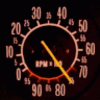First start
#1
 _leighlh_
_leighlh_
Posted 20 August 2014 - 09:38 PM
We have started to work on our Torana again after far too long and want to start the rebuilt 253 for the first time.
So what I would like to know if any tips or thing to do before or when starting the engine has been sitting rebuilt for 8 years unfortunately.
Leigh
#2
 _Bomber Watson_
_Bomber Watson_
Posted 20 August 2014 - 09:56 PM
Drop the oil. Put fresh stuff in.
Change the filter while your going.
Dont worry about the fuel in the tank, unles you have replaced it, either drain the tank and refill or just run it from a 5lt mower tin of fresh petrol.
Pull the plugs out, and crank it over for a little while, if you have an oil pressure guage enough time to get the pressure up somewhat.
plugs back in, give her a go.
Few more things you could do, I suppose, but thats the basics i follow when starting dungers for the first time.
cheers.
#3

Posted 20 August 2014 - 10:02 PM
old fuel stinks when used
Good Luck Leigh
#4
 _leighlh_
_leighlh_
Posted 20 August 2014 - 10:37 PM
I will probably give it a try tomorrow night after work, have fresh fuel, new running in oil and new filter.
Leigh
#5

Posted 21 August 2014 - 12:30 AM
Wouldn't there be a high possibility of flat spotted bearings, lifter to cam lobe damage and general surface rust on anything that wasn't covered by oil ??????
#6
 _Muzzy_
_Muzzy_
Posted 21 August 2014 - 06:55 AM
#7

Posted 21 August 2014 - 07:21 AM
Did the engine have oil pressure when it was stored? Reason I ask, is the Holden V8can be difficult to get oil pressure if the oil pump is dry, it may need packing with "vasoline" so that it will pull oil from the sump, once primed it should be ok. Other than that what Bomber said should work.
#8

Posted 21 August 2014 - 09:30 AM
I would not wind the motor over to gain oil pressure in ANY event.
Fresh break in oil.
If it were my motor I would spring for a few gaskets where needed, pull the inlet manifold and rocker covers at a minimum and re lube and reset the rockers, and if all the cam lube has wiped off I would pull the cam and re lube it.
Repack the oil pump.
Have reassemble and have the motor ready to fire when you hit the key and follow the usual break in procedure.
#9
 _leighlh_
_leighlh_
Posted 21 August 2014 - 10:40 AM
TerrA LX what is the concern with firing the engine first and not turning over to ensure oil pressure, I would have thought ensuring oil would be ideal? I have spoken to a couple of people that rebuilt their own engines years ago that never ran in their cams, is it that important what would be the down side to not doing it exactly right?
Sorry for all the questions just trying to understand.
Leigh
#10

Posted 21 August 2014 - 12:50 PM
TerrA LX what is the concern with firing the engine first and not turning over to ensure oil pressure, I would have thought ensuring oil would be ideal? I have spoken to a couple of people that rebuilt their own engines years ago that never ran in their cams, is it that important what would be the down side to not doing it exactly right?
Sorry for all the questions just trying to understand.
Leigh
Don't be sorry, you only know if you ask, the dumb question is the one not asked, anyway, that's why we have a forum, to discuss these issues.
Having worked in and around the industry for several years and having built several motors myself, I have always been told and experienced, the quickest way to get usable oil pressure to where it is needed most is with a running engine, FWIW most wear is experienced at start up, so imagine having to wind a motor over several times more that is needed to start it, for one, you have just wiped away all the cam protection the builder has placed on the cam etc.
Secondly, the cam, big end and main bearings rely on an oil wedge built up when the shafts rotate, this oil wedge floats the journals, preventing metal to metal contact, if there is insufficient oil supply (remember oil pressure alone is not an indication of supply) wear will occur.
A little on oil pressure v's supply (flow), if you have a really thick oil and crank the motor on the starter continually, you will see a high pressure reading yet flow is not yet at a viable rate.
I could babble on for hours about boundary friction and the oil wedge principal but I think you are better off researching yourself.
True story, A went to a friends house to check a "rebuilt" 308 he just bought to put in his Torana and was going to give it a quick look and a lick of paint, I found two separate valves Collettes not not seated correctly, head bolts lose, cam worn to the point of non serviceable same for the lifters, etc etc.
Now, if you had this motor rebuilt by a reputable builder it may just need re lubing, if it was an Ebay special then I would investigate further.
At the end of the day, if it was an old 253 runner, I would just fire it up and hope for the best, if it was a motor I had rebuilt, I would at bare minimum re lube the valve train and cam where needed.
I hope this helps you make an informed choice.
Edited by TerrA LX, 21 August 2014 - 12:55 PM.
#11

Posted 21 August 2014 - 12:58 PM
Just on running in cams, all cam manufactures recommend it and will not warrant worn or broken cams if procedures are not followed, how important do I think running in a cam is?
Aside from a roller cam, breaking in is essential.
#12
 _leighlh_
_leighlh_
Posted 21 August 2014 - 09:08 PM
Didn't get to it today but will post results when it happens.
Leigh
#13
 _The Baron_
_The Baron_
Posted 21 August 2014 - 10:09 PM
Holden engines are difficult when it comes to priming the oil system for the first time. Some engines out there (chev & ford V8 I think) can be pre-primed by using a special shaft in place of the dizzy to drive the oil pump within the engine instead of winding it over. This means the engine does not wipe off the assembly lube before the engine oil gets there.
To my knowledge the most common practice is pack the oil pump gears area with vasoline (you need to access the internals of the pump for this), then fill the oil filter completely ( speeds up the oils arrival to the engine bearings) and then crank for a short time only until it fires and then watch the oil pressure.
If you have no oil pressure within a few seconds of the engine firing you will need to start all over again. Which is the point you hate the holden engine design.
I had the engine builder present for one start up on a fresh rebuild who used an ingenious technique where pressurised oil was forced through the pressure sender hole from a pressurised tank whilst cranking the engine. Worked a dream.
I have always wondered if a temporary oil pump could be plumbed in through the filter connections and or pressure sender hole such that the system can be primed and pressurised before cranking like at the start of this post. But I have not needed to do so yet, so I never investigated any further.
Makes you wonder though?
Edited by The Baron, 21 August 2014 - 10:11 PM.
#14
 _oldjohnno_
_oldjohnno_
Posted 21 August 2014 - 10:35 PM
You know those pump-up weed sprayers you get from Big W or the hardware shop? With about a 5 or 8 litre tank and the hose and nozzle? If you drain the sump (into the sprayer tank perhaps) then connect the hose to the sender port and pump like buggery it'll do two things. One, it'll prelube the bearings, and two, some of the oil will go backwards through the pump and suction line, priming everything nicely. Turning the crank backwards a few turns while it's pressurised will ensure that the pump is primed. You can repeat the process if you want to, just remember to disconnect it before it runs out of oil and fills the engine with air again. They're also great for priming diesel fuel systems. Someone tried to tell me you can even spray weeds with them but that sounds a bit far fetched.
You can make an even better one (you don't have to pump it for a start) out of an old BBQ gas bottle and a schraeder valve.
Edited by oldjohnno, 21 August 2014 - 10:37 PM.
#15

Posted 22 August 2014 - 12:20 AM
Great Information there Oldjohnno,
Never heard of that before, but is a good one to remember for future references.
I would do your method for an important motor.
Just a side note,
I have just started them up from sitting for years, and hope for the best and they survived.
#16

Posted 22 August 2014 - 06:26 AM
I like the weed sprayer idea oldjohnno, I don't know why I didn't think of it before, I already use one as a pressure brake bleeder.
#17
 _oldjohnno_
_oldjohnno_
Posted 22 August 2014 - 06:28 AM
Probably should add that the weed sprayer won't prime the oil pump if you have an anti-drainback oil filter...
#18
 _Muzzy_
_Muzzy_
Posted 22 August 2014 - 07:09 AM
#19

Posted 22 August 2014 - 11:38 AM
The weed sprayers are also good for filling gearboxes and diffs.
The are a couple of comerical oil priming kits available based on the weed sprayer and LPG bottle.
http://www.melling.c...e/Pre-Lube-Tank

http://motiveproduct...ters_p_157.html

There are also a few electrical or mechanical pump based kits.
Some of the electrical pump kits are designed so they can be plumbed in permanently so the engine can be primed before each start.
https://www.mdrtunin...mp-priming-tool
This one is just an old oil pump mounted in a bucket.
http://www.carcraft....re_luber_build/
http://www.hotrod.co...p_1106_pit_stop


Edited by ls2lxhatch, 22 August 2014 - 11:45 AM.
#20
 _oldjohnno_
_oldjohnno_
Posted 22 August 2014 - 12:02 PM
I already use one as a pressure brake bleeder.
Why didn't I think of that before..
#21

Posted 25 August 2014 - 03:01 AM
I like the weed sprayer idea oldjohnno, I don't know why I didn't think of it before, I already use one as a pressure brake bleeder.
Slightly off topic, but I'm interested in this. Does it just push fluid in at the caliper and force the air out through the master, like reverse bleeding it, or am I way out?
Edited by slr_v8, 25 August 2014 - 03:01 AM.
#22

Posted 25 August 2014 - 03:25 AM
#23

Posted 25 August 2014 - 06:30 AM
Slightly off topic, but I'm interested in this. Does it just push fluid in at the caliper and force the air out through the master, like reverse bleeding it, or am I way out?
I use an old master cylinder top with a fitting in it then connect the sprayer to then pump it up, works well & I don't need two people to bleed brakes or clutch's.
#24

Posted 25 August 2014 - 07:21 AM
Ahhh ok, so your basically force feeding it from the top end. Thanks for that, I might have to rig something up.
#25

Posted 25 August 2014 - 08:07 AM
Some good info from the gurus too.
Does beg the question....for cars that sit in garages, storage, displays etc for years, with normal, usedengines in place......How long till we imagine that the oil has trickled out of the pump and or filter?
and if so, how do they ever reprime themselves?
or have I balls'd this up? are the filter non return valves a perfect seal?
Ta
1 user(s) are reading this topic
0 members, 1 guests, 0 anonymous users






 View Garage
View Garage












